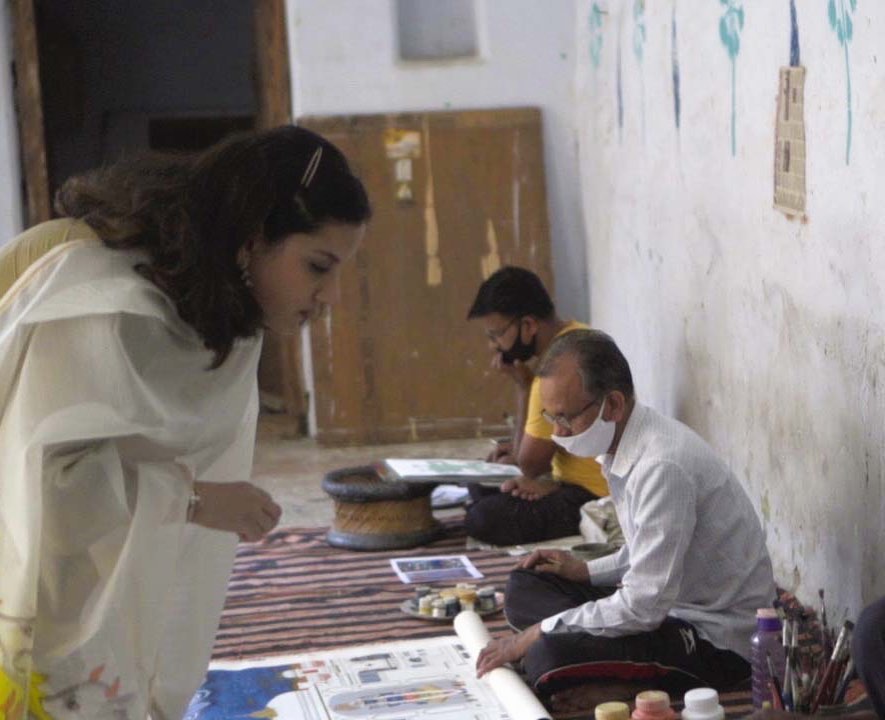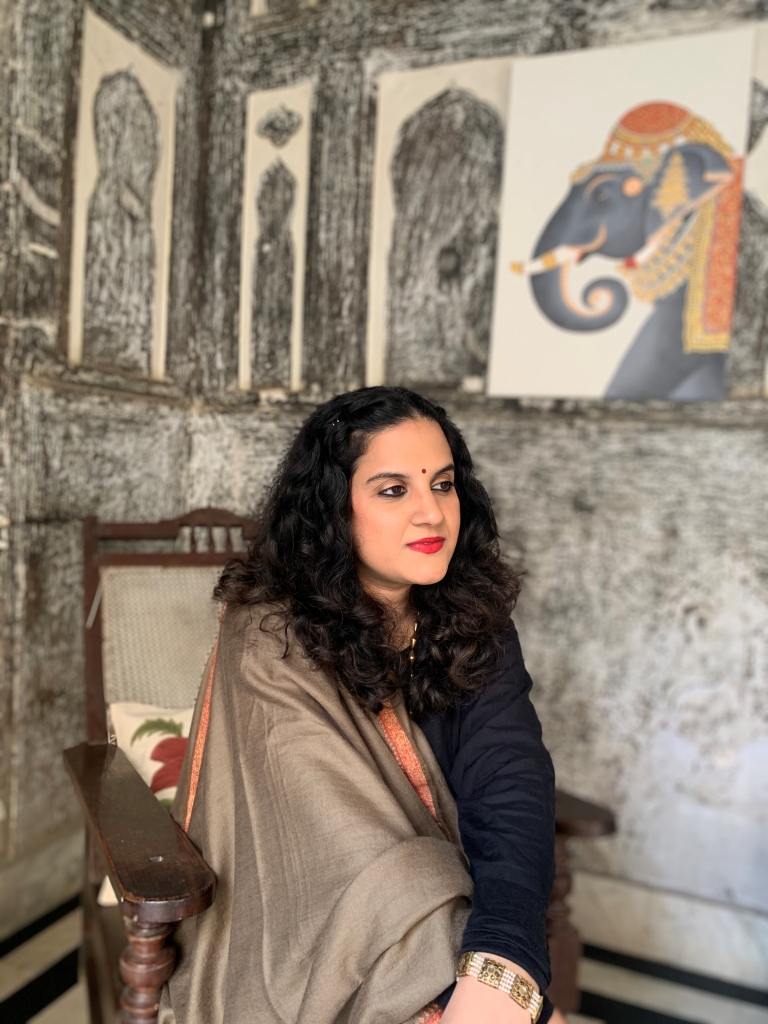The Royal Diaries: Princess Vaishnavi of Kishangarh is working on reviving the lost art
Situated about 100 kilometres from Jaipur, Kishangarh is a small town caught in time. Urban lanes with artistic buildings on either side paint the town unique. But it is not this town that I want to talk about, but its Rajkumari. Princess Vaishnavi, the present-day scion of Kishangarh, has given patronage to several local artists to save the world-famed miniature paintings from Rajasthan. An alum of the British Museum, the princess established Studio Kishangarh in 2010, inspired by the 350-year-old Kishangarh School, the studio produces work deeply influenced by Radha Krishna bhakti and the splendour of the natural beauty around Kishangarh.
With her training in design and art history, Vaishvani endeavours to bring Kishangarh art to a global audience. “For me art is all about preserving heritage and continuation,” shares the princess, as she connects with Global Indian, adding, “There is so much art and craft in this country, and some of them – unfortunately – are dying and need patronage. While it is upon the ancient royal houses, big industrialists, and the government to save these art forms and artisans, I think everyone, in their own way, can contribute to saving the country’s culture and heritage.”
Inspired by art
Born in royalty, the princess was always mesmerised by the art that surrounded her. Some of her most cherished childhood memories are those of the festivals her family celebrated in the Kishangarh Fort. Vaishnavi studied at the Mayo College Girls’ School, situated in Ajmer, and later attended the National Institute of Fashion Technology in Delhi. “Growing up my life was no different than any other kid in this country. I went to a boarding school where kids from various backgrounds come to study. It was the same during my college as well. So, I have a very normal upbringing,” laughs the princess.

The princess, who is also an alumnus of the British Museum where she did a short course in art history, has been inspired by her ancestors, who have passionately promoted art and heritage. “Kishangarh was not a huge kingdom like the other Rajputana states, such as Jodhpur and Jaipur. My forefathers were quite culturally inclined. One of my ancestors is Rajput prince Savant Singh, who is also known as the Poet Prince. He is famous for commissioning beautiful works of miniature painting and composing devotional (bhakti) poetry to Krishna under the nom de plume Nagaridas. My great-great-great grandfather, Sir Madan Singh Bahadur, Maharaja of Kishangarh, took part in the World War I. After he came back from the war, the family did a Hindola, which was a big celebration and we still continue to do it every year. I have grown up hearing the stories of such great people and my family’s history. So, these things really inspired me to pursue a career in art history,” she shares.

Artisans at Studio Kishangarh use miniature paintings and Picchwai techniques in a modern way
After finishing her graduation, Vaishnavi pursued post-graduation in art and archaeology at SOAS University, UK where she studied Asian art. Speaking about how that changed her perspective, the princess states, “When I did the diploma from the British Museum, I had access to various art forms that were not even on display. That was an eye-opening experience for me. At SOAS, I concentrated my studies on Indian temples and Buddhist studies. From an academic perspective, Westerners see art from a study point of view. For example, when they see a sculpture of Shiva and Parvati, they talk about its iconography, history, and political implications of it. So, it gave me a new perspective on Indian art and culture.”
Taking her legacy forward
After returning to India, the princess wanted to work around art. While she was looking at a starting point when she stumbled upon the rich history of arts and artisans in Kishangarh, who would make top-quality products, including paper and soap. “Our old staff would tell me stories about how the bandej of Kishangarh was so famous that some of the material was used in the movie Mother India. They informed me about the paper and soap makers from Kishangarh were also very well known. I tried to find these soap and paper makers but could find none. With time, many of the traditional art forms have died. Fortunately, however, I was able to find the famed miniature painters. At that time, they would paint on furniture that was to be exported. I got them together and started a studio – where we do not pay them per piece, but give them stable employment.”

.png)
Comments
Post a Comment